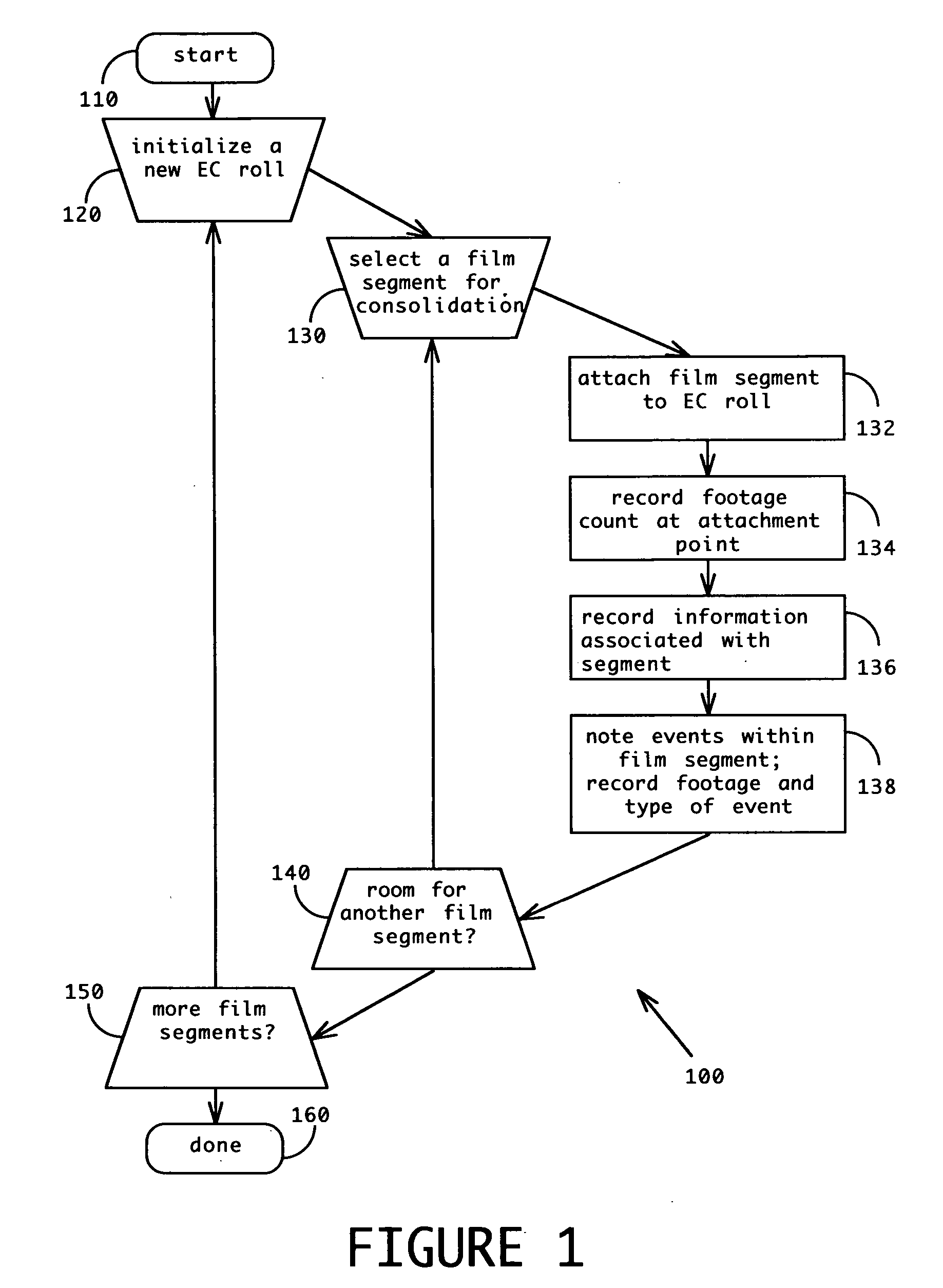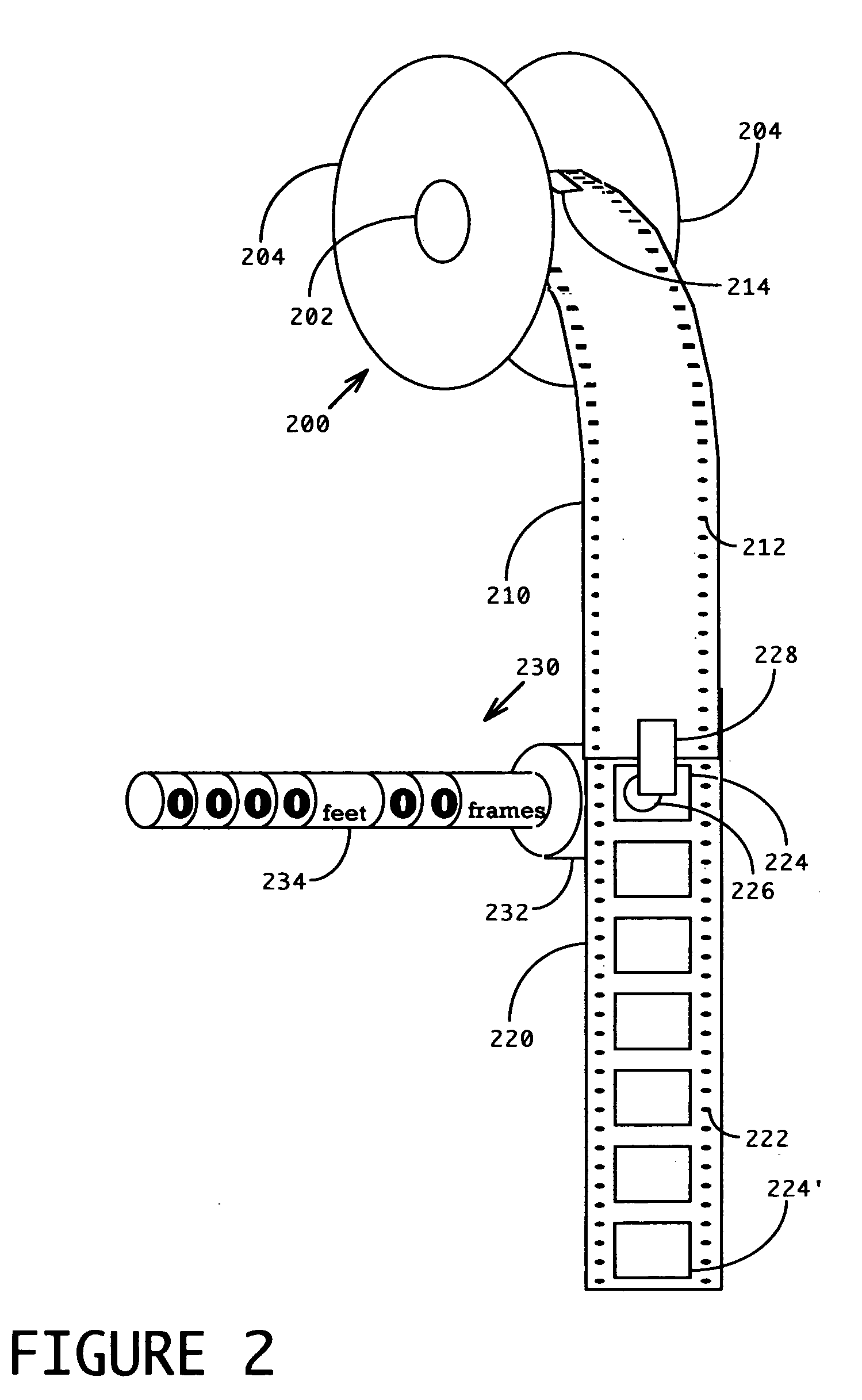Motion picture asset archive having reduced physical volume and method
a technology for motion pictures and asset archives, applied in the field of motion picture asset archive having reduced physical volume and method, can solve the problems of a large amount of material surplus, a large cost of retrieving a single snippet of film from deep storage, and a rare occurrence of material surplus, etc., and achieve the effect of simple user interfa
- Summary
- Abstract
- Description
- Claims
- Application Information
AI Technical Summary
Benefits of technology
Problems solved by technology
Method used
Image
Examples
Embodiment Construction
[0105] The core of the present invention is the method for building of “Element Consolidation,” or “EC” rolls and the generation of a usable index to them. This provides the significant reduction in the physical volume of archived studio film assets, but preserves critical notations and provides the record-keeping necessary for quick retrieval of any specific piece of film or soundtrack.
[0106] Digitized representations of the EC rolls and other crucial assets (e.g. sound rolls) allows a computerized version of the index to provide an convenience, informative, meaningful, and browsable index to the asset collection.
[0107] This detailed description first discusses the construction of an EC roll, including the capture of pertinent record-keeping information. This is followed by a description of the digitization of pertinent assets to be retained; and a discussion of a database suitable for record-keeping and access. Finally, a user interface for such access and a recommended network ...
PUM
| Property | Measurement | Unit |
|---|---|---|
| running time | aaaaa | aaaaa |
| physical volume | aaaaa | aaaaa |
| time | aaaaa | aaaaa |
Abstract
Description
Claims
Application Information
 Login to View More
Login to View More - R&D
- Intellectual Property
- Life Sciences
- Materials
- Tech Scout
- Unparalleled Data Quality
- Higher Quality Content
- 60% Fewer Hallucinations
Browse by: Latest US Patents, China's latest patents, Technical Efficacy Thesaurus, Application Domain, Technology Topic, Popular Technical Reports.
© 2025 PatSnap. All rights reserved.Legal|Privacy policy|Modern Slavery Act Transparency Statement|Sitemap|About US| Contact US: help@patsnap.com



